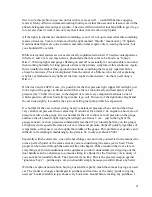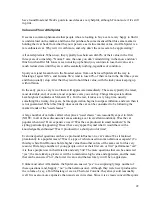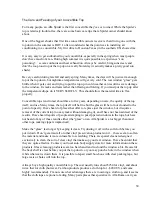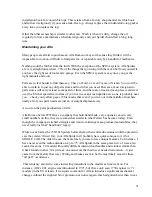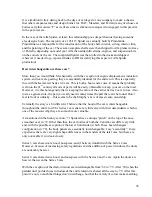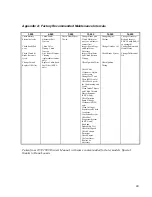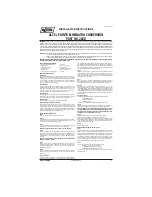
29
There are, however, some things that tend to wear out in an Alfa that don
“
t normally wear out in
other cars. Some examples:
TIE ROD ENDS AND LOWER BALL JOINTS. The cars tend to be very hard on the two tie rod
ends that connect the center link to the steering box and idler arm. The classic symptom of tie rod
end failure is loose steering. If your Alfa
“
s steering starts getting a little flaccid, check these tie
rod ends first. Lower ball joints tend to fail as well. This can cause the car to feel
”
jiggly
„
and be
affected by roadway imperfections. Fortunately, neither item is expensive, and both are relatively
easy to replace by even a novice mechanic.
U-JOINTS. The cars also seem to enjoy eating U-joints at regular intervals. The classic symptom
of U-joint failure is drivetrain vibration. If your Alfa gets a vibration that seems to be coming
from UNDER the car, and especially if it seems to get worse while you change speed, check the
U-joints. Again, these items aren
“
t very expensive, but I have been told by two different
professional Alfa mechanics that it is a very bad thing to try to hammer them in and out of the U-
joint yokes. Apparently the yokes are fragile and bend easily. Take the assembly to a machine
shop and have them pressed in instead.
NOTE: your Spider
“
s driveshaft is a balanced, multi-piece affair. Before removing it for
whatever reason, be sure to mark its position with chalk so you can put it back together correctly.
RUBBER DRIVESHAFT DONUT. While nothing as bad as the 116 series cars, Spiders do have
a single donut and it does sometimes fail. This device acts in place of a U-joint just behind the
transmission. Failure is usually indicated the same way as U-joint failure
a sudden increase in
drivetrain vibration. Always inspect the donut twice a year by getting under the car and checking
it visually, and manually by feeling for cracks and tears. If it is damaged, get it replaced. Letting a
damaged donut go can ruin the output shaft on your transmission.
ELECTRICAL FAILURES. 90% of all Alfa electrical problems seem to be caused by loose
connections. Before getting out your multimeter (or taking it to an auto electrician), turn the
device
“
s switch ON, then run your finger across the fuse box (just under the driver
“
s side dash,
on the left of the steering wheel). Be sure to turn each fuse at least a quarter turn as you rub it
with your finger. Many times this will bring back the failed connection. Note which fuse it is, and
next time you are cleaning the car get some sandpaper or steel wool and clean that connection.
Especially on the later cars, be sure to clean all the ground wires you can see with a special-
purpose electric connection cleaner.
REAR PINION SEAL. This is one that isn
“
t mentioned much in the books, but I
“
ve seen pinion
seals fail no fewer than four times on different cars. The symptoms of this failure are a puddle of
fluid at the REAR of the car, a differential housing wet with very sticky oil, and a very strange
burning smell coming from the rear of the car after a long drive. You can keep the car going by
making sure the fluid in the rear axle is topped off. Be aware that if you let this one go too long,
your rear axle will get progressively louder and louder, and it will stay loud even after you fix the
seal and fill the rear end.







